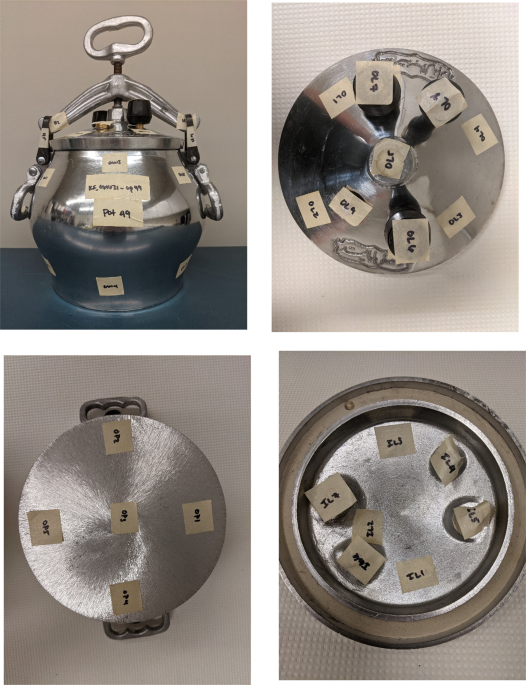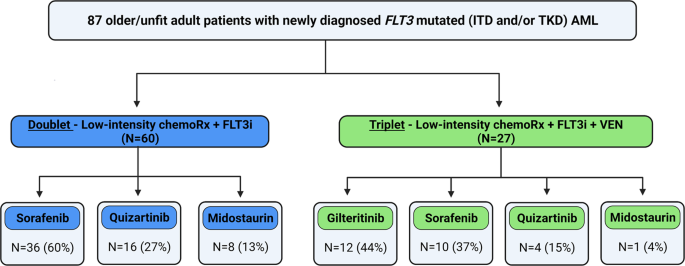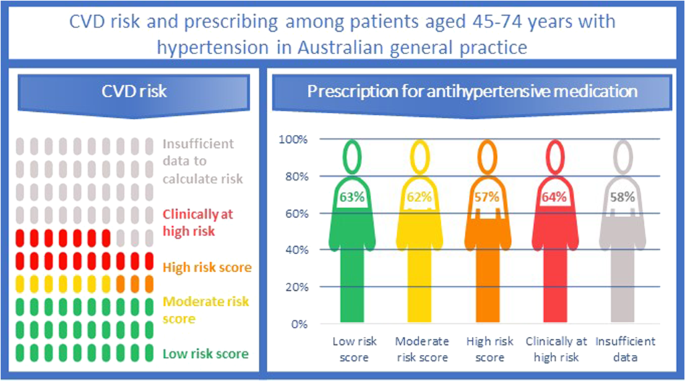|
Αρχειοθήκη ιστολογίου
-
►
2023
(391)
- ► Φεβρουαρίου (200)
- ► Ιανουαρίου (191)
-
▼
2022
(2843)
- ► Δεκεμβρίου (161)
- ► Σεπτεμβρίου (219)
-
▼
Μαΐου
(244)
-
▼
Μαΐ 02
(16)
- Incidences and characteristics of primary lung mal...
- Emergence of dalbavancin, vancomycin, and daptomyc...
- Comparison of Hydration Index, Percent Hydration, ...
- Investigating aluminum cookpots as a source of lea...
- Hypomethylating agent and venetoclax with FLT3 inh...
- Predicted cardiovascular disease risk and prescrib...
- Screening auf Mangelernährung bei Kopf-Hals-Tumor-...
- The tight rope act: A multicenter regional experie...
- Extravasation and outcomes in computed tomography ...
- Prehospital low titer group O whole blood is feasi...
- Evaluating the complex association between Social ...
- The effect of tranexamic acid dosing regimen on tr...
- Direct to OR resuscitation of abdominal trauma: An...
- Beta blockade in TBI: Dose-dependent reductions in...
- DNA Methylation subclass Receptor Tyrosine Kinase ...
- Artificial Enamel – Stronger and Durable finds oth...
-
▼
Μαΐ 02
(16)
- ► Φεβρουαρίου (264)
- ► Ιανουαρίου (280)
-
►
2021
(5625)
- ► Δεκεμβρίου (231)
- ► Σεπτεμβρίου (345)
- ► Φεβρουαρίου (620)
-
►
2020
(2065)
- ► Δεκεμβρίου (535)
- ► Σεπτεμβρίου (222)
- ► Φεβρουαρίου (28)
-
►
2019
(9608)
- ► Δεκεμβρίου (19)
- ► Σεπτεμβρίου (54)
- ► Φεβρουαρίου (3791)
- ► Ιανουαρίου (3737)
-
►
2018
(69720)
- ► Δεκεμβρίου (3507)
- ► Σεπτεμβρίου (3851)
- ► Φεβρουαρίου (8116)
- ► Ιανουαρίου (7758)
-
►
2017
(111579)
- ► Δεκεμβρίου (7718)
- ► Σεπτεμβρίου (7549)
- ► Φεβρουαρίου (10753)
- ► Ιανουαρίου (10529)
-
►
2016
(16402)
- ► Δεκεμβρίου (7478)
- ► Φεβρουαρίου (900)
- ► Ιανουαρίου (1250)
! # Ola via Alexandros G.Sfakianakis on Inoreader
Η λίστα ιστολογίων μου
Δευτέρα 2 Μαΐου 2022
Incidences and characteristics of primary lung malignancies in childhood i
Emergence of dalbavancin, vancomycin, and daptomycin non-susceptible Staphylococcus aureus in a patient treated with dalbavancin: Case report and isolate characterization
|
Comparison of Hydration Index, Percent Hydration, and Trans-Epidermal Water Loss Measurements for Dermal Exposure and Risk Assessment
|
Investigating aluminum cookpots as a source of lead exposure
|
Hypomethylating agent and venetoclax with FLT3 inhibitor “triplet” therapy in older/unfit patients with FLT3 mutated AML
|
Predicted cardiovascular disease risk and prescribing of antihypertensive therapy among patients with hypertension in Australia using MedicineInsight
|
Screening auf Mangelernährung bei Kopf-Hals-Tumor-Patienten vor onkologischer Therapie
|
The tight rope act: A multicenter regional experience of tourniquets in acute trauma resuscitation
|
Extravasation and outcomes in computed tomography and angiography in patients with pelvic fractures requiring transcatheter arterial embolization: A single-center observational study
|
Prehospital low titer group O whole blood is feasible and safe: Results of a prospective randomized pilot trial
|
Evaluating the complex association between Social Vulnerability Index and trauma mortality
|
The effect of tranexamic acid dosing regimen on trauma/hemorrhagic shock-related glycocalyx degradation and endothelial barrier permeability: An in vitro model
|
Αρχειοθήκη ιστολογίου
-
►
2023
(391)
- ► Φεβρουαρίου (200)
- ► Ιανουαρίου (191)
-
▼
2022
(2843)
- ► Δεκεμβρίου (161)
- ► Σεπτεμβρίου (219)
-
▼
Μαΐου
(244)
-
▼
Μαΐ 02
(16)
- Incidences and characteristics of primary lung mal...
- Emergence of dalbavancin, vancomycin, and daptomyc...
- Comparison of Hydration Index, Percent Hydration, ...
- Investigating aluminum cookpots as a source of lea...
- Hypomethylating agent and venetoclax with FLT3 inh...
- Predicted cardiovascular disease risk and prescrib...
- Screening auf Mangelernährung bei Kopf-Hals-Tumor-...
- The tight rope act: A multicenter regional experie...
- Extravasation and outcomes in computed tomography ...
- Prehospital low titer group O whole blood is feasi...
- Evaluating the complex association between Social ...
- The effect of tranexamic acid dosing regimen on tr...
- Direct to OR resuscitation of abdominal trauma: An...
- Beta blockade in TBI: Dose-dependent reductions in...
- DNA Methylation subclass Receptor Tyrosine Kinase ...
- Artificial Enamel – Stronger and Durable finds oth...
-
▼
Μαΐ 02
(16)
- ► Φεβρουαρίου (264)
- ► Ιανουαρίου (280)
-
►
2021
(5625)
- ► Δεκεμβρίου (231)
- ► Σεπτεμβρίου (345)
- ► Φεβρουαρίου (620)
-
►
2020
(2065)
- ► Δεκεμβρίου (535)
- ► Σεπτεμβρίου (222)
- ► Φεβρουαρίου (28)
-
►
2019
(9608)
- ► Δεκεμβρίου (19)
- ► Σεπτεμβρίου (54)
- ► Φεβρουαρίου (3791)
- ► Ιανουαρίου (3737)
-
►
2018
(69720)
- ► Δεκεμβρίου (3507)
- ► Σεπτεμβρίου (3851)
- ► Φεβρουαρίου (8116)
- ► Ιανουαρίου (7758)
-
►
2017
(111579)
- ► Δεκεμβρίου (7718)
- ► Σεπτεμβρίου (7549)
- ► Φεβρουαρίου (10753)
- ► Ιανουαρίου (10529)
-
►
2016
(16402)
- ► Δεκεμβρίου (7478)
- ► Φεβρουαρίου (900)
- ► Ιανουαρίου (1250)









